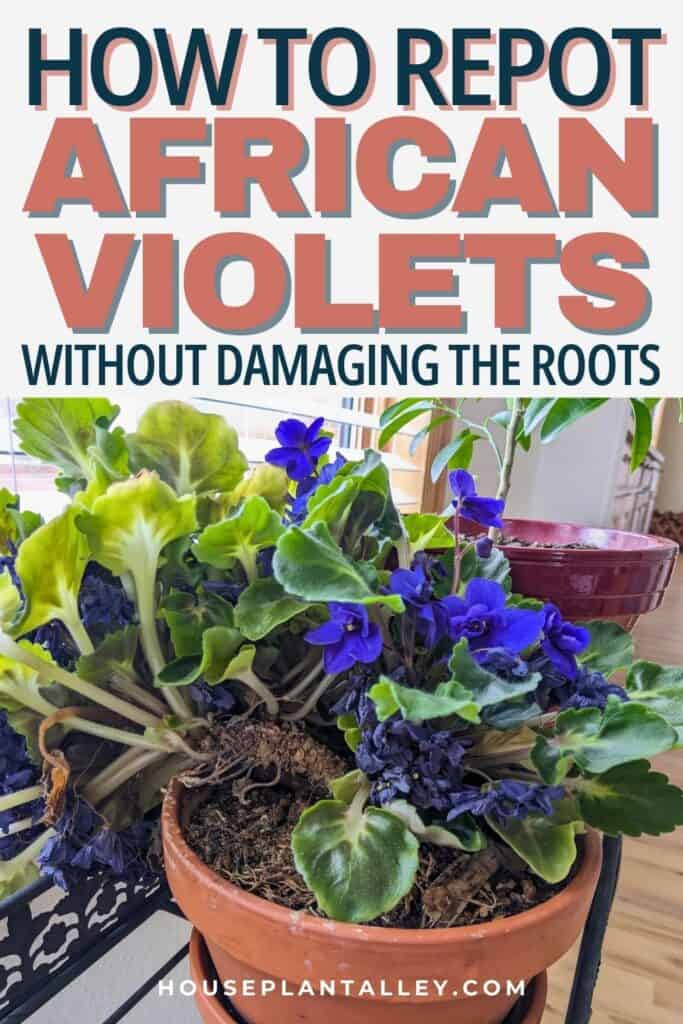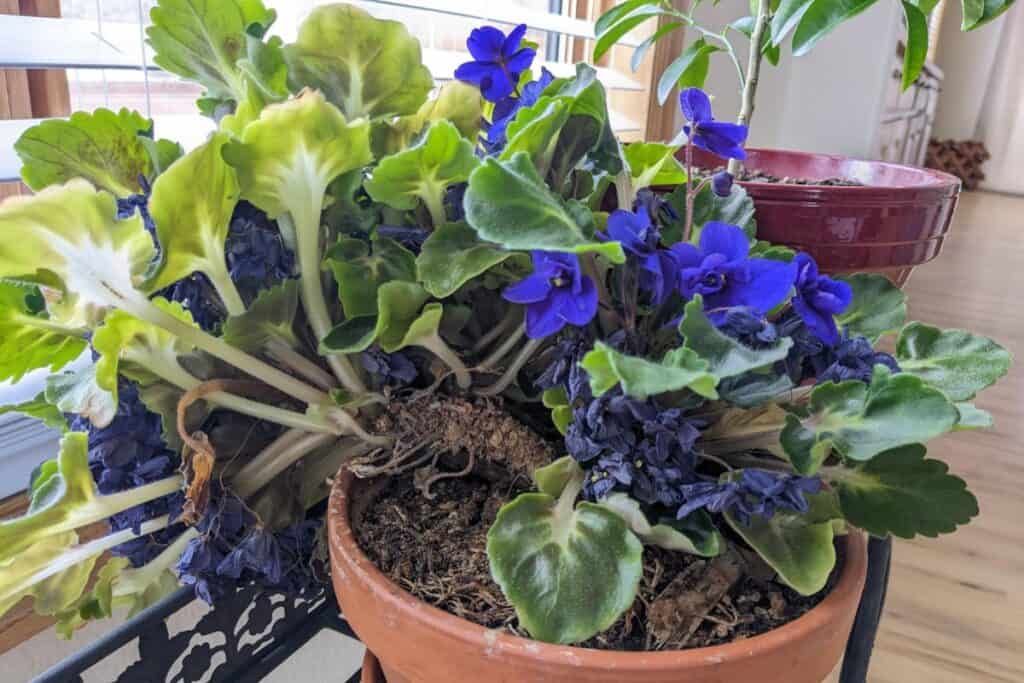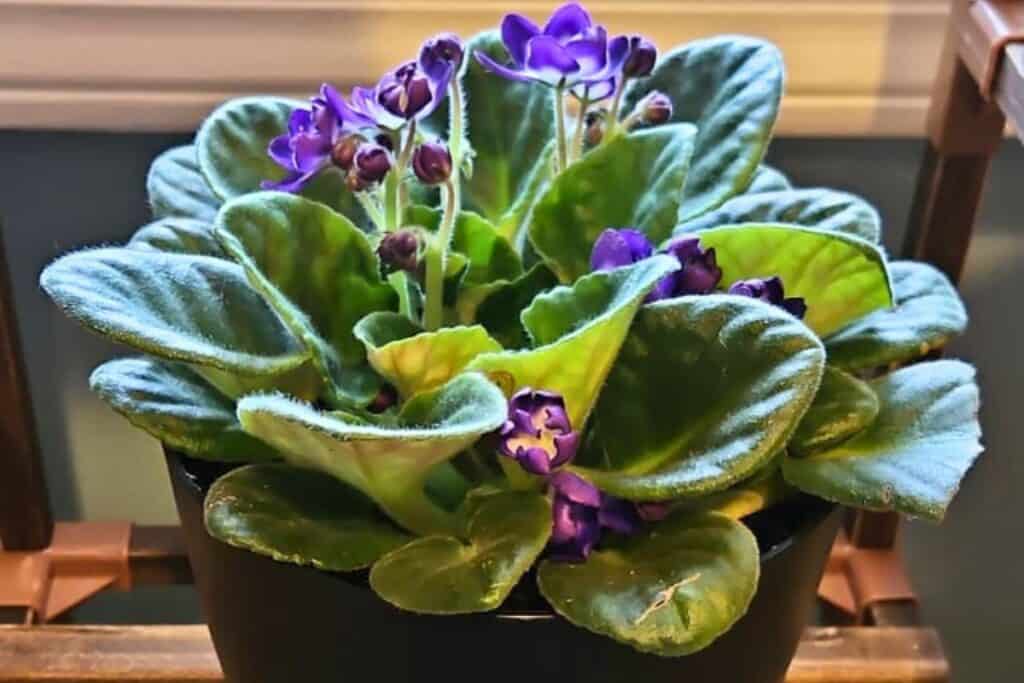If your African violet looks crowded, has yellow leaves, or roots poking out of the pot, it’s not failing—it’s just asking for more space. Repotting might sound scary, especially when your plant is blooming, but it’s easier than you think. The key is learning what your plant is trying to tell you.

🌱 What African Violets Need to Grow Well
African violets may look delicate, but they’re tough little plants. They stay small—usually under six inches wide—and grow slowly. They like:
- Bright, indirect sunlight (like near an east-facing window)
- Warm temperatures between 65–75°F
- Steady humidity (not too dry)
Too much direct sun can burn their leaves, so filtered light is best.
🕵️ Signs Your African Violet Needs Repotting
Here’s how to know it’s time to repot:
- Soil feels hard and doesn’t hold water
- Leaves turn yellow or brown
- The plant grows a long “neck” where bottom leaves fell off
- Roots are coming out of the drainage holes
- You’ve been overwatering or see signs of root rot
Most adult violets should be repotted twice a year. Younger ones might need it every three months.

🌸 What If Your Plant Is Blooming?
It’s okay to repot even if your violet is flowering. The plant might slow down a bit while it recovers, but it won’t be harmed. If you’re trimming roots, you can also cut off the flowers to help the plant focus on healing. Since African violets bloom for a long time, waiting for a flower-free moment isn’t always possible. Health comes first!
🧰 What You’ll Need to Repot
Before you start, gather these supplies:
- African violet potting mix (regular soil holds too much water)
- A small pot with drainage holes (just a little bigger than the current one)
- Pruning shears
- Gardening gloves
- A small trowel
Having everything ready makes the process smoother.
🪴 How to Prepare the New Pot and Remove the Plant

- Wash the new pot with warm, soapy water.
- Make sure the drainage holes are clear.
- Add a thin layer of gravel if using a ceramic or terracotta pot.
- Fill the bottom with African violet soil.
To remove the plant:
- Gently squeeze the sides of the old pot.
- Hold the stem near the soil (not the leaves).
- If it’s stuck, moisten the soil or tap the bottom of the pot.
✂️ How to Handle the Roots and Add Fresh Soil
Once the plant is out:
- Look at the roots. Cut off any brown, mushy, or damaged parts.
- Use clean shears and trim about half an inch from healthy white roots.
- Gently pull apart tangled roots with your fingers.
- Place the plant in the new pot and fill in with soil, making sure there are no air pockets.
🌞 Aftercare: Helping Your Violet Recover
For the next 2–3 weeks:
- Keep the soil moist but not soggy.
- Water gently and check daily.
- Place the plant in bright, indirect light.
- Slowly move it back to its usual spot over a week.
You should see new growth in about 10–14 days—that means your violet is happy in its new home!
